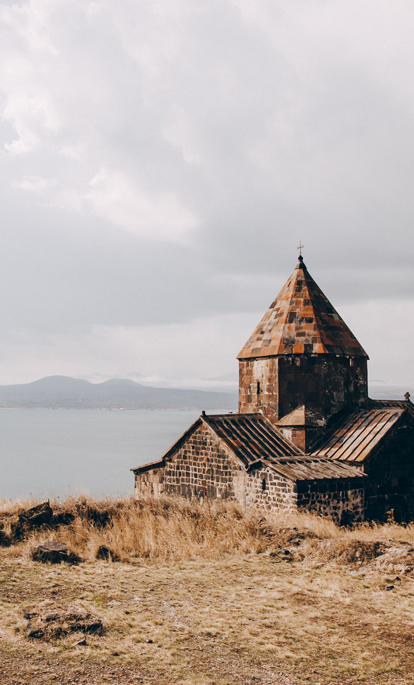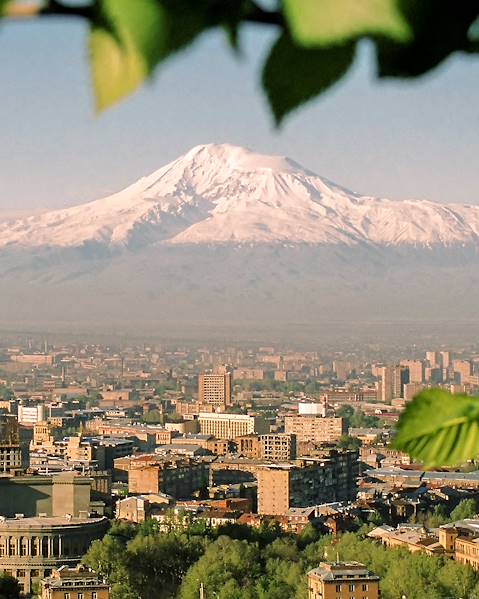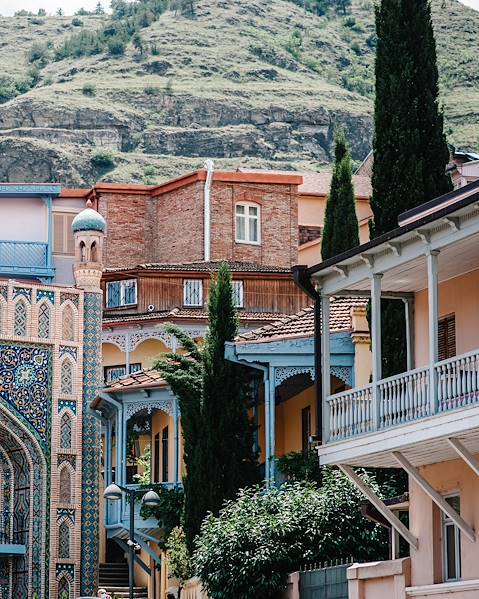Population
2.791 million (2021)
Official Language
Armenian
Languages Spoken
The main languages that Armenians speak are Russian and English. Others that are commonly spoken include French, German, Italian, Spanish and Persian; while the minority languages include Assyrian, Greek and Northern Kurdish.
People
The vast majority of Armenia is made up of Armenians (98.1%) with the minorities being Russians, Yezidis, Kurds, Assyrians, Greeks, Ukrainians, Jews and others.
Religion
Armenians have a very strong cultural connection to the Armenian Apostolic Church, with about 97% of citizens belonging to this Eastern Christian denomination in communion with the other Oriental Orthodox churches. As well as this there are Catholics—both Armenian Catholic Church and Latin Church, Jehovah's Witness, Eastern Orthodox (Russian, Ukrainian, Georgian, Greek), Molokan (non-Orthodox Russians), Assyrian Church of the East (Nestorian), Protestant, Church of Jesus Christ of Latter-day Saints, Yazidi, Pagan, Muslim and people of other religions.
Holiday calendar
January 1: New Year’s Day
January 6: Orthodox Christmas & Epiphany
January 28: National Army Day
March 8: Women’s Day
In late March to early April: Easter (from Good Friday to Easter Monday).
April 24: Genocide Memorial Day
May 1: Labour Day
May 9: Victory Day
May 28: Day of the First Republic
July 5: Constitution Day
September 18: Exaltation of the Holy Cross
September 21: Armenian Independence Day
December 31: New Years Eve
Politics
Armenia is a representative parliamentary democratic republic. This means that the Armenian constitution adhered to the model of a semi-presidential republic until April 2018. According to the current Constitution of Armenia, the President is the head of state, which means that they hold largely representational functions, while the Prime Minister is the head of government and exercises executive power. Since 1995, Legislative power is vested in the Azgayin Zhoghov or National Assembly, which is a unicameral parliament consisting of 105 members, and Armenia has universal suffrage above the age of eighteen.
Story
This landlocked country, officially known as the Republic of Armenia, can be found in the Armenian Highlands of Western Asia – although it identifies as European. Part of the Caucasus region, Armenia is bordered by Turkey in the west, Georgia in the north, the Lachin corridor (under a Russian peacekeeping force) and Azerbaijan to the east, and Iran and the Azerbaijani exclave of Nakhichevan to the south. The capital, largest city and financial hub is Yerevan.
Armenia is known for being a unitary, multi-party, democratic nation-state with an ancient cultural heritage. It wasn’t until the time between the 16th and 19th centuries that the traditional Armenian homeland (composed of Eastern Armenia and Western Armenia) came under the rule of the Ottoman and Persian empires. Both repeatedly ruled over the centuries, and by the 19th century Eastern Armenia had been conquered by the Russian Empire, while most of the western parts of the traditional Armenian homeland remained under Ottoman rule. The First World War saw 1.5 million Armenians living in their ancestral lands in the Ottoman Empire before being systematically exterminated in the Armenian genocide. This was a devastating time for the country and in 1918, following the Russian Revolution, all non-Russian countries declared their independence after the Russian Empire ceased to exist, leading to the establishment of the First Republic of Armenia. By 1920, the state was incorporated into the Transcaucasian Socialist Federative Soviet Republic and then in 1922 it became a founding member of the Soviet Union. Then in 1936, the Transcaucasian state was dissolved. This transformed the constituent states, including the Armenian Soviet Socialist Republic, into full Union republics.
The modern Republic of Armenia became independent in 1991 during the dissolution of the Soviet Union, where it has since continued to become a developing country, with an economy that’s primarily based on industrial output and mineral extraction. As mentioned, Armenia considers itself European, and because of this it is a member of numerous European organisations including the Council of Europe, the Eastern Partnership, Eurocontrol, the Assembly of European Regions, and the European Bank for Reconstruction and Development. As well as this, Armenia is also a member of certain regional groups throughout Eurasia, including the Asian Development Bank, the Collective Security Treaty Organization, the Eurasian Economic Union, and the Eurasian Development Bank. Armenia supports the de facto independent Republic of Artsakh (Nagorno-Karabakh), which was originally proclaimed in 1991 on territory that has been internationally recognised as part of Azerbaijan.
Etiquette
Armenian people are notoriously hospitable, friendly and kind, making journeying here a reassuring and enjoyable experience. There’s a strong sense of tradition, culture and respect towards all, with strong family values found throughout. It’s important to note that Armenia has a limited water reservoir, which means that locals know and appreciate the worth of this natural resource. It also means that many of the country's traditions involve water as a symbol of appreciation, life and good luck. In terms of tipping, it is customary in many eateries to have a service charge of around 8-10% already included, but this is not a tip. For tipping the waiting staff it is usually 10-15% on larger bills and haggling is generally seen as a no go.
Food
Armenia’s cuisine has been influenced by countless others, from the Mediterranean and Middle East to Eastern Europe. One thing has remained a constant: that the freshest ingredients are used. Armenian fruit and vegetables are famous throughout the region, as well as all kinds of spices, herbs, meat and fish, and eating is a huge part of Armenian life. Sample Khorovats, an Armenian kebab that sees soft chunks of meat skewered and grilled in rich aromatic marinades. Either enjoy these as they are, or with leafy green salads and wrapped in lavash, the delicious local flat bread. Or of course, there’s the classics like dolma and tabbouleh. But Armenia has so many other delicacies to offer, like the taste of home-made manti, which are delicious baked dumplings served in tomato sauce with a garlicky yoghurt on the side. Or the winter warmer Ghapama, which is a butternut pumpkin that’s had its inners scooped out and then stuffed with rice and dried fruits. Whatever dish you opt for you’ll be sure to leave with stomachs full and a longing for some authentic Armenian grub when you return home.
Drink
The drinking water in Armenia comes from natural underground sources, except for a few settlements. But almost the entire country is supplied with clean water that does not need to be boiled or filtered, making the tap water safe to drink. As well as this, Armenians enjoy an array of popular soft drinks, including local Jermuk mineral waters and matsun. The most popular national alcoholic drinks include cognac, which is made from selected grape species and grown in the Ararat Valley. As well as the equally traditional and popular mulberry vodka ‘Artsakh’ and Armenian wine.















